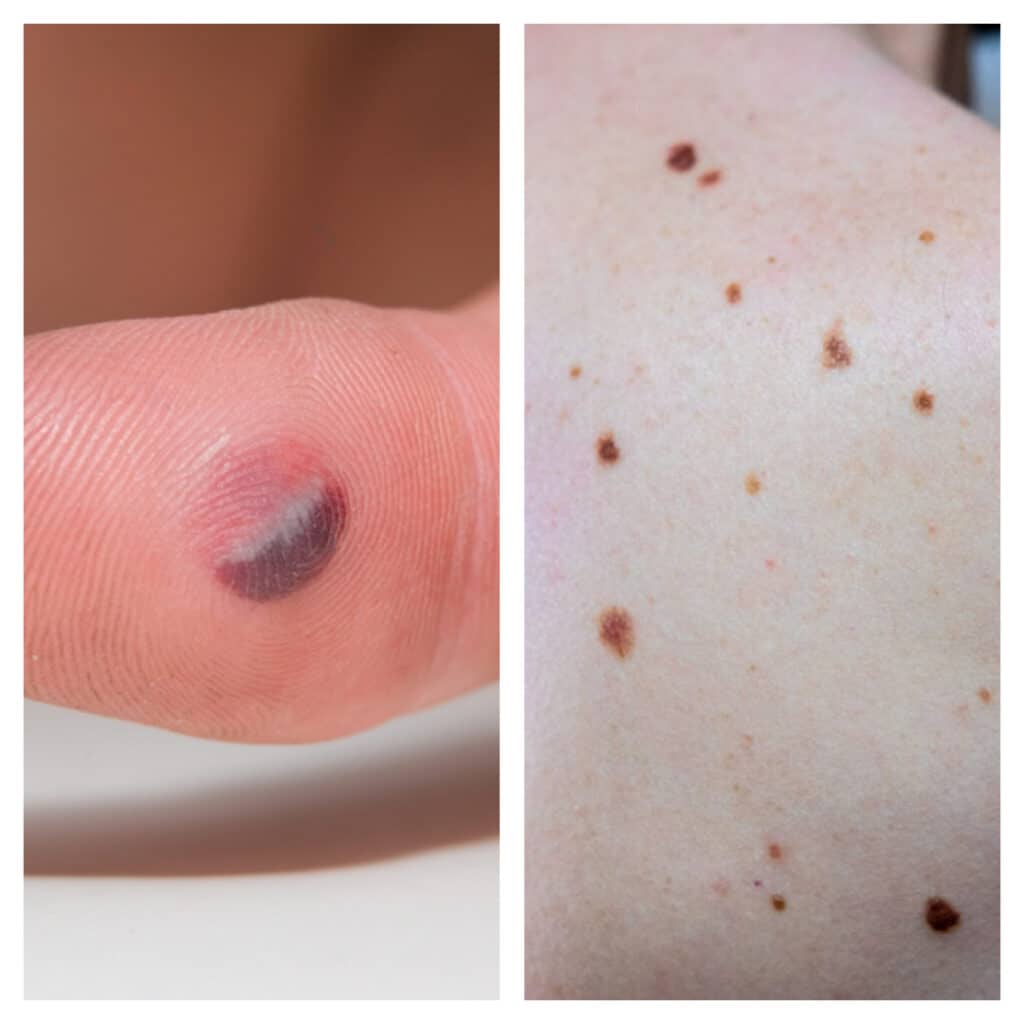Blood Blister vs Melanoma: How to Tell Them Apart?
- Author: seoteam
- Published:
Enjoying our beautiful sun-soaked days here in Australia is a blessing, but it also requires us to be mindful of our skin’s well-being. Distinguishing between different skin issues can be tricky, especially when they share similar appearances. For instance, it can be easy to mistake a blood blister for a melanoma. In this blog post, we’ll explore the unique features of these skin abnormalities, providing clear guidance on how to tell them apart and when it’s essential to consult a doctor.

Understanding Blood Blisters: A Brief Overview
Blood blisters are small, fluid-filled bumps that appear on the skin due to trauma, such as pinching or excessive friction. They are characterised by:
- A reddish or dark appearance due to the presence of blood beneath the skin.
- A tender sensation when touched.
- Typically, it forms on areas subjected to friction, like the feet or hands.
Melanoma: More Than Just a Mole
Melanoma is a type of skin cancer arising from pigment-producing cells called melanocytes and is often mistaken for a mole, especially in its early stages. However, its implications are severe and understanding its characteristics is crucial for early detection and treatment.
Appearance & Characteristics
Unlike regular moles, melanomas often display an asymmetrical shape, meaning one half of the mole doesn’t mirror the other. They can have irregular and uneven borders, and their colour isn’t consistent.
Evolution Over Time
If you notice a mole or skin lesion that is changing in size, shape or colour, it’s important to consult a doctor. Melanomas can also become itchy, tender or even bleed.
Key Differences: Blood Blisters vs. Melanoma
Feature | Blood Blisters | Melanoma |
Appearance | Fluid-filled bumps on the skin | Solid, often irregularly shaped skin growth |
Colour | Typically red or dark due to trapped blood | Can have multiple colours, including brown, black, red, blue or even a mix of these |
Evolution | Heal over time and may change in colour as they heal | Can grow, change shape or colour over time |
Texture | Soft and tender to the touch | May be raised, rough or smooth |
Associated Symptoms | Pain or tenderness at the site of the blister | Itching, bleeding or pain in the mole or growth |
When to Seek Medical Advice
If you notice any of the following skin concerns, it’s important to consult a doctor:
- A new mole or skin lesion.
- Changes in the appearance of an existing mole.
- A mole that bleeds, itches or becomes painful.
- Any skin lesion that doesn’t heal.
Tips for Prevention & Care
The following tips can help you protect against potential skin concerns:
- Regular Skin Checks: Schedule routine skin examinations to detect any abnormalities early.
- Sun Protection: Always wear sunscreen, hats and protective clothing when outdoors.
The Importance of Skin Checks
A routine skin check can help in early detection of skin conditions like melanoma.
Why Skin Checks Matter
Melanoma can appear in various shapes and sizes, and not all are visible to the naked eye. Doctors can employ advanced medical equipment and techniques during skin checks to accurately identify, diagnose and treat different forms of skin cancer.
What to Expect During a Skin Check
During a skin check, doctors perform a full-body evaluation, meticulously examining skin lesions or moles that may be of concern. They often use high-definition imaging to better visualise potential areas of concern, such as colour changes or unusual textures. After reviewing these images, they establish an accurate diagnosis. If any treatment or removal is required, they develop a tailored plan for management and future prevention.
How Often Should You Get Checked?
Given the seriousness of melanomas and their rapid progression, it’s recommended to undergo a professional skin cancer check annually. However, if you notice any changes in your skin, such as new marks, moles or existing moles that have grown or changed in shape or colour, book an appointment immediately.
Self-Examinations
In addition to professional skin cancer checks, it’s essential to regularly examine your own skin every month. When conducting these checks, use the ABCDE detection guide:
- Asymmetry
- Border irregularities
- Colour variations
- Diameter (larger than 6 mm)
- Evolution or changes over time
Consult a Doctor
At Eli Waters Medical Centre, we use advanced medical equipment and techniques to offer comprehensive, head-to-toe skin cancer checks in Hervey Bay. Our team can guide and support you in maintaining your skin health. Whether you need a routine skin check or have specific concerns, contact us to book an appointment.




